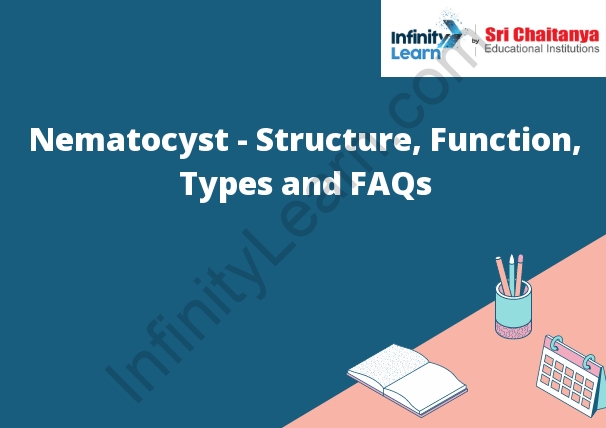Table of Contents
Nematocysts Meaning
Nematocysts are tiny, harpoon-like cells that are found in the tentacles of jellyfish and other marine creatures. They are used to capture and sting prey. Nematocysts are also used in defense against predators. Nematocyst – Structure Function Types and FAQs.

Nematocyst Structure and Function:
A nematocyst is a small, cylindrical, venom-filled capsule that is fired from the surface of cnidarian cells. The nematocyst is composed of a coiled tubule that is attached to a disk-like structure at one end. The tubule is filled with venom and the disk contains barbs that anchor the nematocyst in prey. When the cnidarian cell is stimulated, the nematocyst is fired and the tubule coils around the prey, injecting the venom.
Types of Nematocysts:
There are three types of nematocysts:
1. Hydrozoan nematocysts: These nematocysts are found in Hydrozoa, a class of aquatic animals. These nematocysts are small and can inject venom into prey.
2. Cubozoan nematocysts: These nematocysts are found in Cubozoans, a class of aquatic animals. These nematocysts are small and can inject venom into prey.
3. Scyphozoan nematocysts: These nematocysts are found in Scyphozoa, a class of aquatic animals. These nematocysts are large and can inject venom into prey.
Cnidocyte Development
Cnidocytes are cells that are found in the tissues of cnidarians. They are responsible for the animal’s ability to sting and inject venom. Cnidocytes develop from stem cells that are found in the cnidarian’s body wall. The stem cells divide to create two types of cells: cnidoblasts and nematoblasts. Cnidoblasts will eventually become cnidocytes, while nematoblasts will become nematocytes. Cnidoblasts and nematoblasts will also form cnidocysts and nematocysts, which are the structures that contain the venom.
Nematocyst Toxicity
A nematocyst is a type of stinging cell found in cnidarians, which includes jellyfish, sea anemones, and corals. These cells are used to capture prey, and their venom can be quite toxic. Symptoms of nematocyst venom toxicity can include pain, redness, swelling, itchiness, and blistering. In severe cases, nematocyst venom toxicity can lead to difficulty breathing, heart problems, and even death. Treatment typically involves removing the venom with soap and water, ice, or vinegar.
Nematocyst – Structure Function Types and FAQs.







